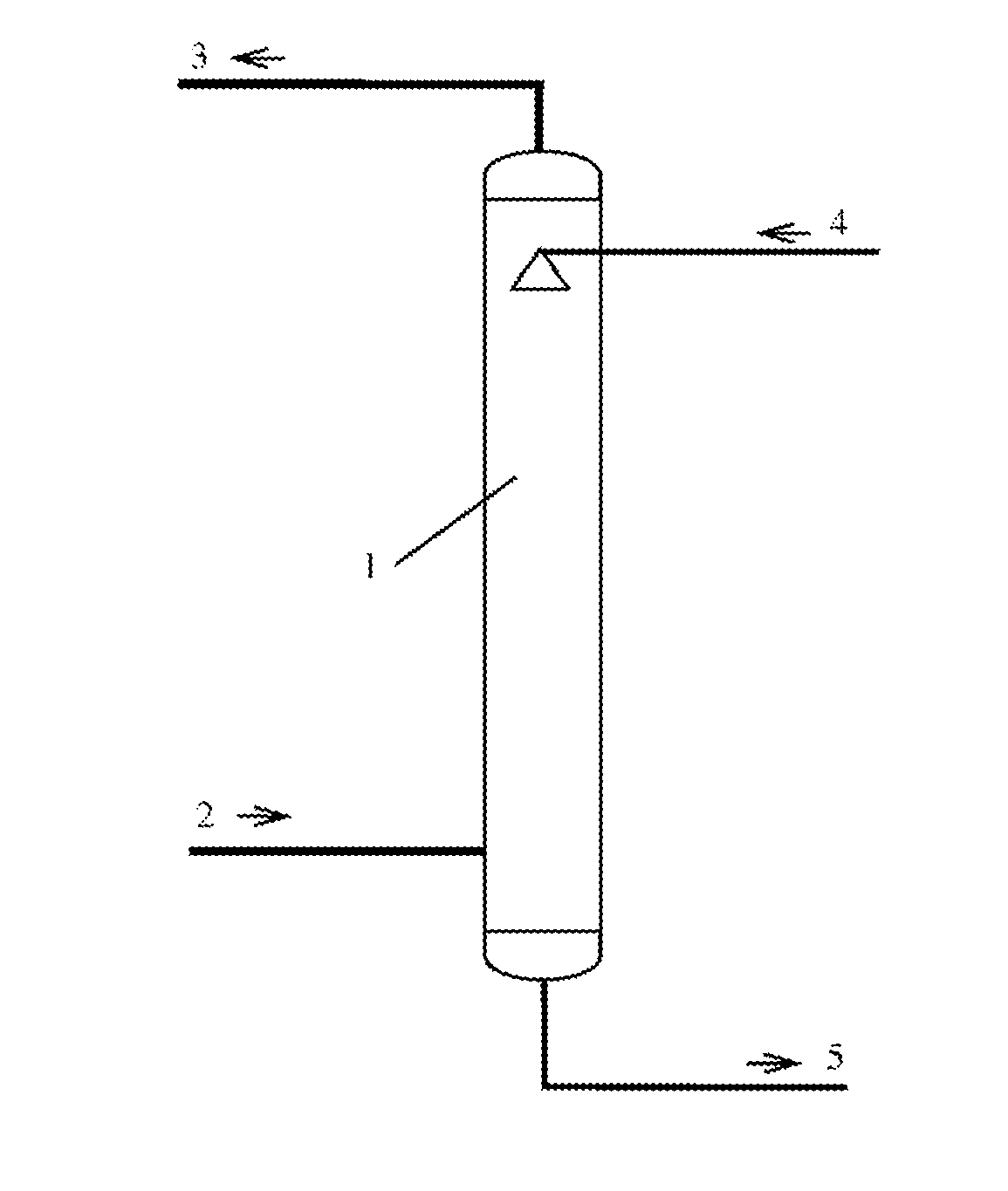Method for Removing SOx from Gas with Compound Alcohol-Amine Solution
a technology of alcohol-amine solution and sox, which is applied in the direction of dispersed particle separation, chemistry apparatus and processes, and separation processes, etc., can solve the problems of not making breakthrough progress in desulfurization techniques of flue gas, industrial raw material gas containing sulfur and other waste gases, and affecting the health of people, etc., to achieve stable solution, reduce the ability of solution to absorb sulfur, and broad market
- Summary
- Abstract
- Description
- Claims
- Application Information
AI Technical Summary
Benefits of technology
Problems solved by technology
Method used
Image
Examples
Embodiment Construction
[0068]The desulfurization method by compound alcohol-amine solution according to the invention is described below with reference to some specific embodiments. The embodiments described hereinafter are only for better illustrating the present invention rather than limiting the claims of the present invention.
[0069]The first process is a desulfurization and absorption process as shown in FIG. 1. The gas 2 containing SOx is fed from the bottom of the desulfurization tower 1 and contacted with the desulfurization lean liquor 4 counter-currently. The SOx in the gas 2 containing SOx is absorbed by the lean liquor 4. The gas 2 containing SOx is converted into purified gas 3 which is discharged out from the top of the desulfurization tower 1. The desulfurization lean liquor 4 with absorbed SOx is converted into desulfurization rich liquor 5 at the bottom of the desulfurization tower 1. The desulfurization rich liquor 5 is discharged out from the bottom of the desulfurization tower 1 and tra...
PUM
| Property | Measurement | Unit |
|---|---|---|
| mass percent content | aaaaa | aaaaa |
| mass percent content | aaaaa | aaaaa |
| mass percent content | aaaaa | aaaaa |
Abstract
Description
Claims
Application Information
 Login to View More
Login to View More - R&D
- Intellectual Property
- Life Sciences
- Materials
- Tech Scout
- Unparalleled Data Quality
- Higher Quality Content
- 60% Fewer Hallucinations
Browse by: Latest US Patents, China's latest patents, Technical Efficacy Thesaurus, Application Domain, Technology Topic, Popular Technical Reports.
© 2025 PatSnap. All rights reserved.Legal|Privacy policy|Modern Slavery Act Transparency Statement|Sitemap|About US| Contact US: help@patsnap.com



